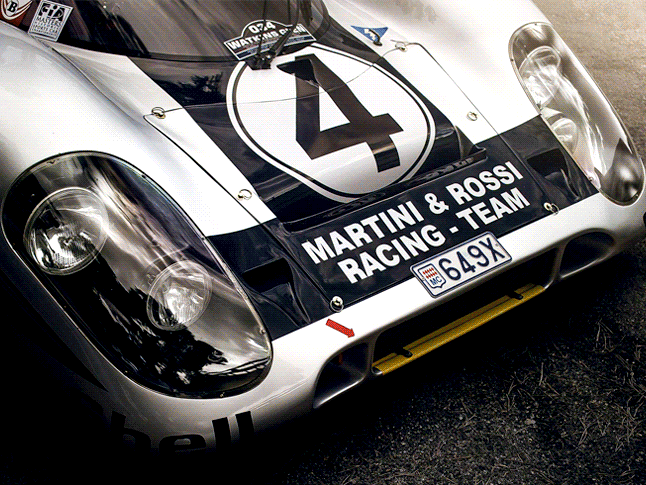The newest road-legal Porsche 917
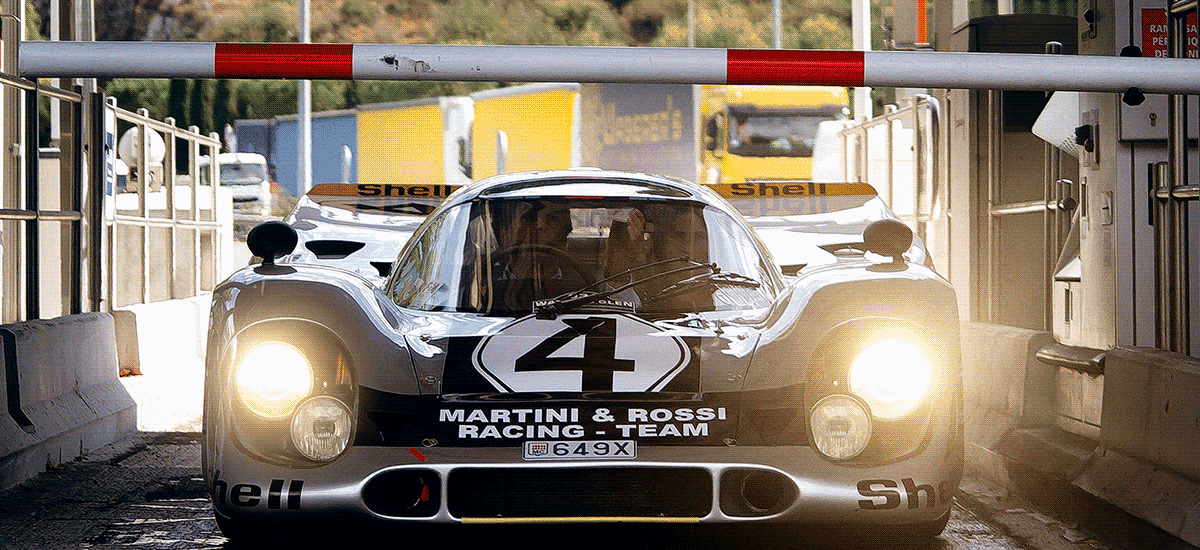
![]()
The story of how Porsche’s 917 came to dominate the highest levels of sports car racing in both North America and Europe has been well told, from the car’s genesis at Porsche’s Zuffenhausen facilities to its ultimate vanquishing of all comers at both Le Mans and in Can-Am to its insanely high speeds, both in races and on closed-course top-speed runs.
Porsche’s original run was 25 cars, to meet homologation for the 1969 sports car season, but an additional lot of 25 or so chassis were constructed, some of which were later built into race cars, some of which were held back in case of crash damage to the racing cars—a very real possibility for an endurance racing machine. Porsche built a few more open cars, the 917/10 and 917/30, to compete in the Interseries in Europe and Can-Am in North America. But only two 917s had ever been registered for the road, until now, and one of those (chassis number 917.021) was but a brief affair, the car later restored to its famous racing livery.
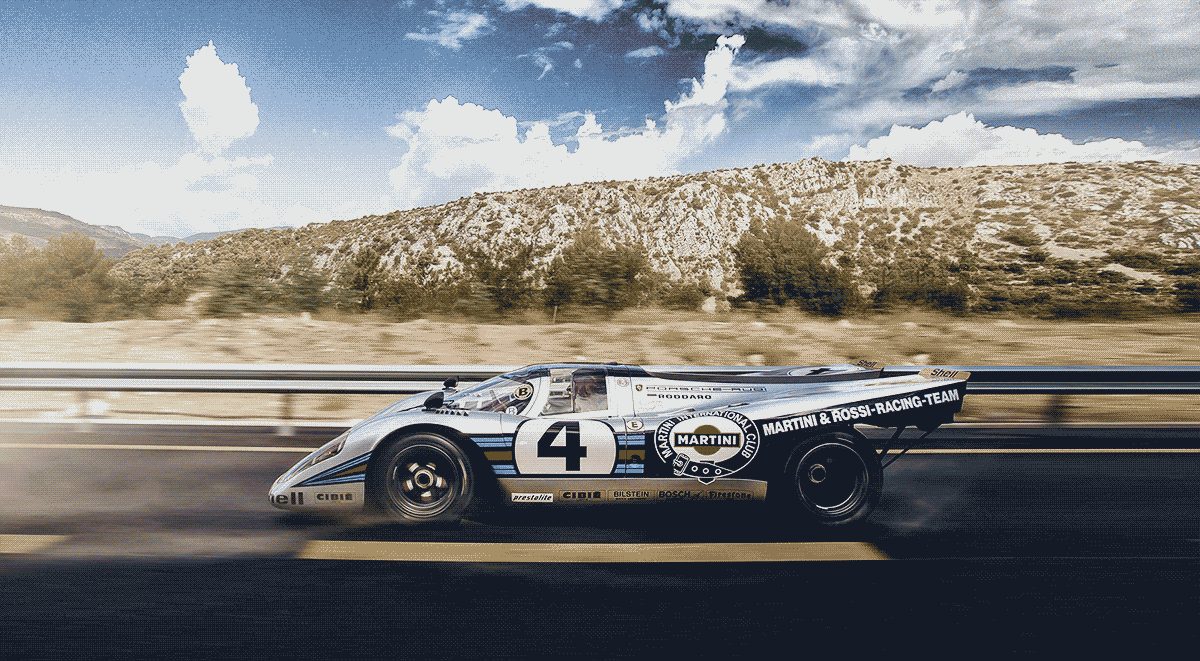
![]()
In the 1970s, Count Rossi of Martini & Rossi fame purchased the car with chassis number 917.030, a car that had previously raced under Martini sponsorship but had crashed during its last race in 1971. Count Rossi could find no country in Europe willing to issue license plates for it. So, instead, he came stateside and managed to convince the state of Alabama to do the honors. Given that the car was plated with Alabama tags in 1975 might have had something to do with Mark Donohue’s record 221-mph lap at Talladega, cementing both the 917 as the fastest racing car and the famed Alabama track as the fastest in the world. Legend has it that Rossi was given his license plate as long as he promised never to take the car to Alabama. As far as we know, the car only ever plied the roads of Europe, not Dixieland.
Rossi’s threading of the Alabama loophole would come to the assist of Claudio Roddaro, who recently registered a 917 in Monaco. (I’d ask “Where else?” but with the answer to that question legitimately “Alabama,” I needn’t bother.) We recently saw a release from Porsche about Roddaro’s roadgoing beast of a car. Let’s just do some quick math: His 917 features a 600-hp, normally aspirated, 4.9-liter flat-twelve that powers a 600-kg fiberglass-over-steel-tube-frame racing machine wearing tires with contact patches big enough for each piece of rubber to get its own zip code.
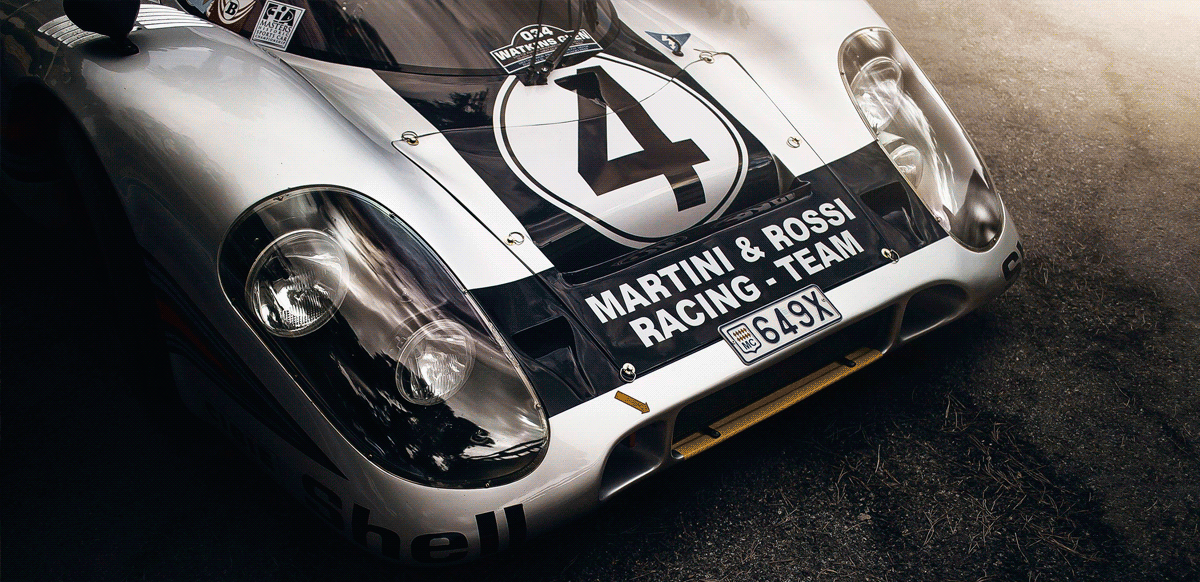
![]()
Roddaro purchased the car, chassis number 917.037 in 2016. When I saw the release from Porsche’s media department sharing Roddaro’s story, I thought the car looked familiar. Unlike Count Rossi’s car, which was a slick, sticker-free, all-silver livery when it was tooling around 40 years ago, Roddaro’s car wore the same livery as the #4 917 that crashed out while leading the Daytona 24 in 1971 with Vic Elford at the wheel. In fact, this was the same car I had photographed at Watkins Glen in 2012 during the SVRA event there.
Chassis 037 was one of the spares that Porsche kept in reserve, but was never used to repair or complete any other car. The chassis ended up in the hands of noted West Coast Porsche dealer Vasek Polak and later his longtime parts manager, Carl Thompson, who also acquired enough spares to create what was essentially a new 917K decades after the last one was completed in Zuffenhausen. (The 917K refers to the short-tail “Kurtz” version that ultimately solved the car’s high-speed skittishness.) Thompson completed the car in the late 1990s, using a new fiberglass body crafted by world-renowned Porsche racing and restoration shop Gunnar Racing, led by Kevin Jeannette. The car wears the #4 Martin & Rossi livery because the silver-backed scheme just looked so good on the exacting replica body built by Gunnar and also because the #4 car was never repaired, allowing it to exist without questioning the provenance of any other 917.
At Watkins Glen, where I was able to get up close and personal, and even in the 917 during our photo shoot, the car was clearly setup for racing, with plenty of exposed wiring to go along with some very basic ducting to keep a driver cool in that big, enclosed cockpit during an on-track session. Switchgear is 100-percent functional, with no consideration to style. An exposed circuit board, representing state-of-the-art race-car electronics, circa 1970, rested just inches from the driver’s left leg. A non-adjustable racing bucket cradled the driver, securely held into his place with a multi-point Willans harness. It was all quite businesslike.
Outside, the re-created body and its finish were true works of art. The proportions of the 917 defined top-level sports car racing for decades, well into—and beyond—the Nineties. The 917’s influence can be hard to overstate. At the heart of the low-slung, voluptuous 917 sat a powerhouse of a 12-cylinder engine, its heavy breathing unmistakable once it was fired up.
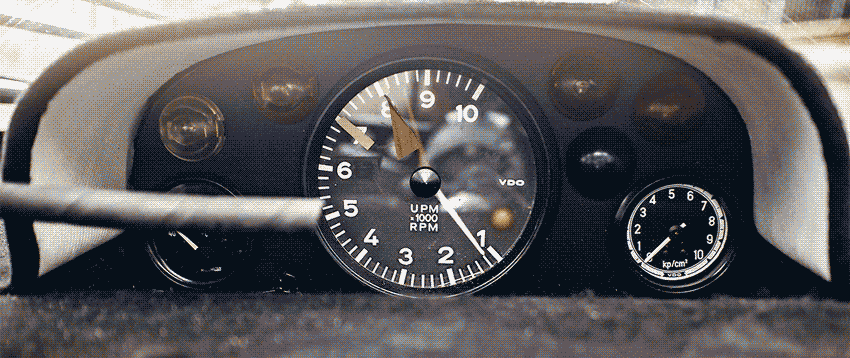
![]() Truth be told, that experience, hanging out with a 917, its extremely gracious and accommodating owner, Greg Galdi, and his crew, and having the track to ourselves to take some pictures, just has to rank as one of the greatest experiences of this job. I should probably quit if it did not. As a kid, though I barely remember the end of the original Can-Am (long after Porsche had been relegated out of that series by the rules, for the turbocharged 1,200-hp 917/30 was just so utterly, unflinching dominant in the hands of Dononue and Team Penske), the 917 was the first car I was truly fascinated with, thanks largely to an entry in The Guinness Book of World Records, touting the car’s speed at Talladega and along the Mulsanne Straight, where it was said to have bested 240 mph.
Truth be told, that experience, hanging out with a 917, its extremely gracious and accommodating owner, Greg Galdi, and his crew, and having the track to ourselves to take some pictures, just has to rank as one of the greatest experiences of this job. I should probably quit if it did not. As a kid, though I barely remember the end of the original Can-Am (long after Porsche had been relegated out of that series by the rules, for the turbocharged 1,200-hp 917/30 was just so utterly, unflinching dominant in the hands of Dononue and Team Penske), the 917 was the first car I was truly fascinated with, thanks largely to an entry in The Guinness Book of World Records, touting the car’s speed at Talladega and along the Mulsanne Straight, where it was said to have bested 240 mph.
Since the Guinness Book was tantamount to the word of god, the 917 became my go-to as the best race car of all time. Apparently, I had a pretty good sense of what was what during my school-age years, because plenty of people have bestowed that “all-time greatest race car” title on the 917. So, we can understand why Roddaro would want to take it on the streets of the tiny principality that many a La Ferrari, McLaren P1, and Porsche 918 call home.
Fortunately for Roddaro, Count Rossi’s car proved to be his own loophole to registering 037. Though Porsche did not build this 917, the company later gave it an appropriate chassis plate, certifying it as a 917. Ironically, since it was never crashed and contains largely NOS parts, the car is possibly the most original 917 in existence, though it obviously has zero racing provenance. Porsche’s certification of the car helped Roddaro convince the authorities in Monaco that his car was essentially the same as Rossi’s. Approval from the Monaco DMV (We can only imagine what it must be like to work in that office!) took a couple of months and we suspect lots of forms in triplicate and paperwork flying all over Europe, or at least Germany and Italy.
It takes a lot to stand out in the sea of supercars and insane luxury vehicles in Monaco, but doing it in a 917 certainly takes the cake. Of course, the first time we saw this car on the street was during that Watkins Glen Vintage Grand Prix Festival weekend, as the entrants took two “parade” laps around the original Watkins Glen street course through the village.
Photos courtesy Porsche AG.
Porsche 917.037 at Watkins Glen during the 2012 SVRA Vintage Grand Prix weekend. Photo by Terry Shea.
Terry Shea on Jun 12th, 2018

